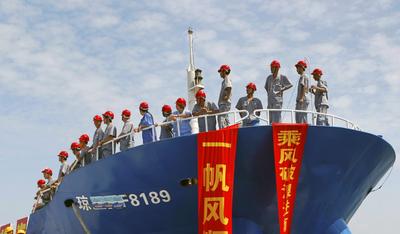Some regional powers also saw the event as an opportunity to keep a closer eye on China; and nobody wants a conflict or even a quasi-military confrontation to disrupt what are generally regarded as peaceful — and lucrative — channels of trade.
But those who expect the ASEAN–China discussions to result in some kind of breakthrough that will lead quickly to a resolution are bound to be disappointed. There are several reasons for this, all having to do with fundamental differences between China and ASEAN on a variety of issues pertaining to a proposed CoC for the South China Sea.
The first is that, while ASEAN keeps calling for the ‘early conclusion’ of a CoC, China has insisted on going slow. Beijing has been demanding the full and effective implementation of the 2002 Declaration on the Conduct of Parties in the South China Sea (DoC) before the conclusion of a CoC. (The DoC itself calls for ‘the adoption of a code of conduct in the South China Sea’.)
At their last formal meeting, on 30 June 2013, the ASEAN foreign ministers said they looked forward to ‘formal consultations between ASEAN and China at the SOM [senior officials’ meeting] level on the COC with an aim to reach an early conclusion of a Code of Conduct in the South China Sea’. On the other hand, shortly after the ASEAN and Chinese foreign ministers had agreed to engage in ‘official consultations’ on the code ‘within the framework of the implementation of the DOC’, Xinhua news agency quoted Wang Yi, China’s new foreign minister, as warning against rushing work on the CoC.
Another issue is the coverage of the proposed CoC. Vietnam insists on the inclusion of the Paracel Islands in any discussion on the South China Sea, for example, but China refuses to discuss the topic. In any case, China has not sufficiently elaborated on the nature of its nine-dash line by providing exact coordinates. So, where would the proposed CoC apply? How would it be enforced? The difficulty of these questions and the intractability of the disagreements around them forced the downgrading of the initial CoC to a DoC in 2002.
Another problem is the Chinese insistence on conducting bilateral discussions with individual claimants, all of which are ASEAN member states, and none of which is anywhere near matching China’s military power. Moreover, some of the Spratly Islands are claimed by more than two parties. How can there be ‘bilateral’ negotiations in such cases?
ASEAN as a group has long been in talks with China and other parties about the South China Sea; in March 1995, as a reaction to Philippine complaints about China’s occupation of Mischief Reef, all ASEAN foreign ministers issued a statement expressing their ‘serious concern over recent developments which affect peace and stability in the South China Sea’. But most fundamental is the disagreement about how to reconcile the claimants’ national interests and the rule of international law. Although claimants in the South China Sea often justify their claims in high-minded terms, history shows that these same countries pursue their claims for strategic and commercial reasons. On the other hand, there is international law, with which all countries must comply and which is usually regarded as a refuge of weak states. Which should prevail when they come into conflict — national interest or the rule of law?
This is a difficult question. When pursuing its perceived national interest, a country’s ability to compromise is often reduced. Negotiations are made more complicated by the influence of increasing numbers of people. This, in turn, is aided by a combination of government policy and revolutionary technologies. It is a reality that negotiators have to take into account.
Nevertheless, the ASEAN–China consultations on the proposed CoC would function better if each party clarified what its national interests really are, and if assurances were given that those interests would be protected in any future compromise. They would also be more effective if mutual trust were strengthened, so that disputes over claims do not erupt into violent conflict.
This is the most that official consultations on a CoC for the South China Sea can achieve; but they are already considerable triumphs. It must be remembered that neither ASEAN nor any ASEAN–China forum is an adjudicating body that can ‘resolve’ sovereignty or other jurisdictional conflicts. However, everybody has an interest in regional peace and stability, the maintenance of the rule of law in international relations, the freedom and safety of navigation and overflight, and the cohesion of ASEAN.
Rodolfo C. Severino is the head of the ASEAN Studies Centre, the Institute of Southeast Asian Studies, Singapore. He is a former ASEAN secretary-general. The views expressed here are solely his own.

